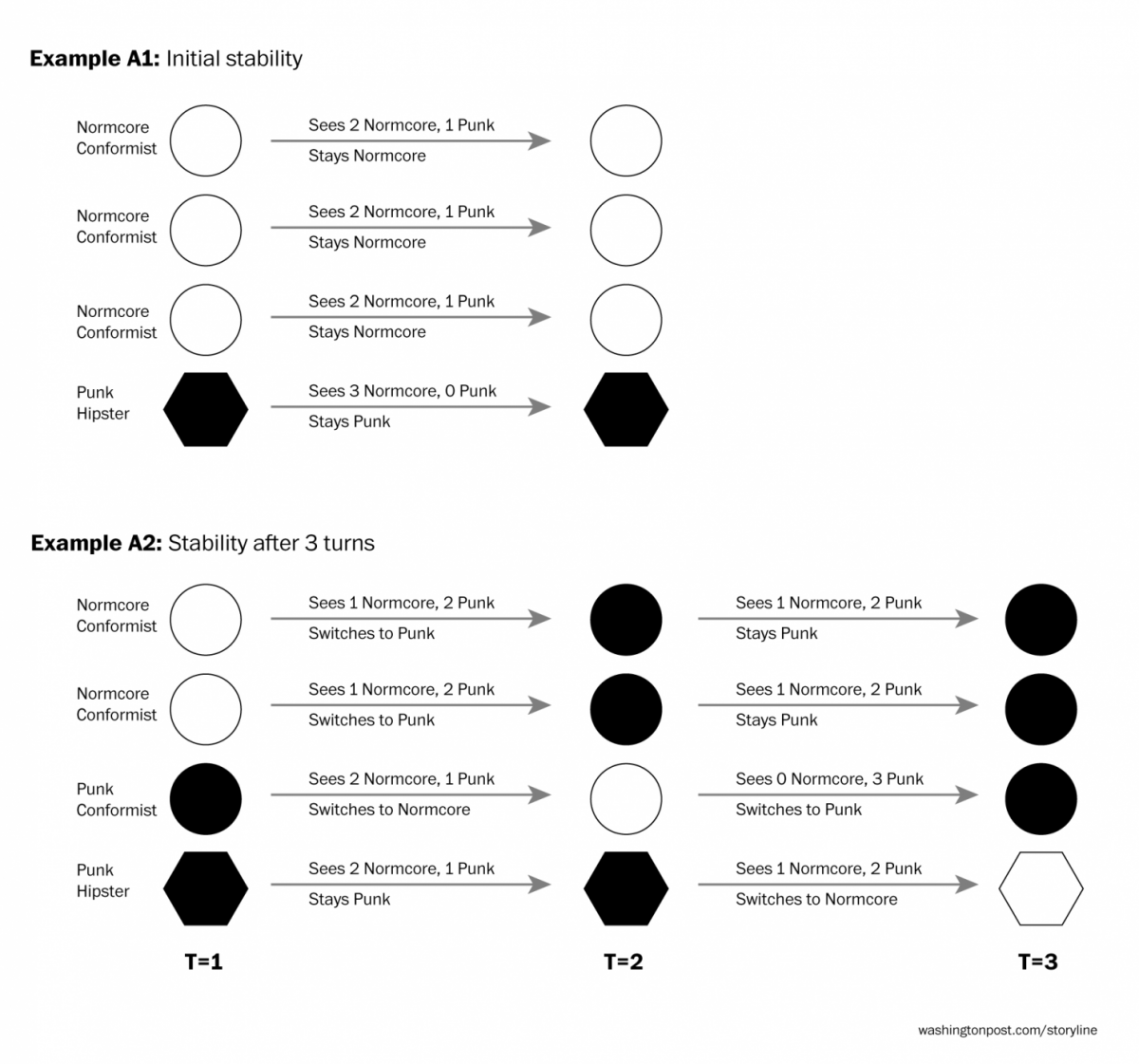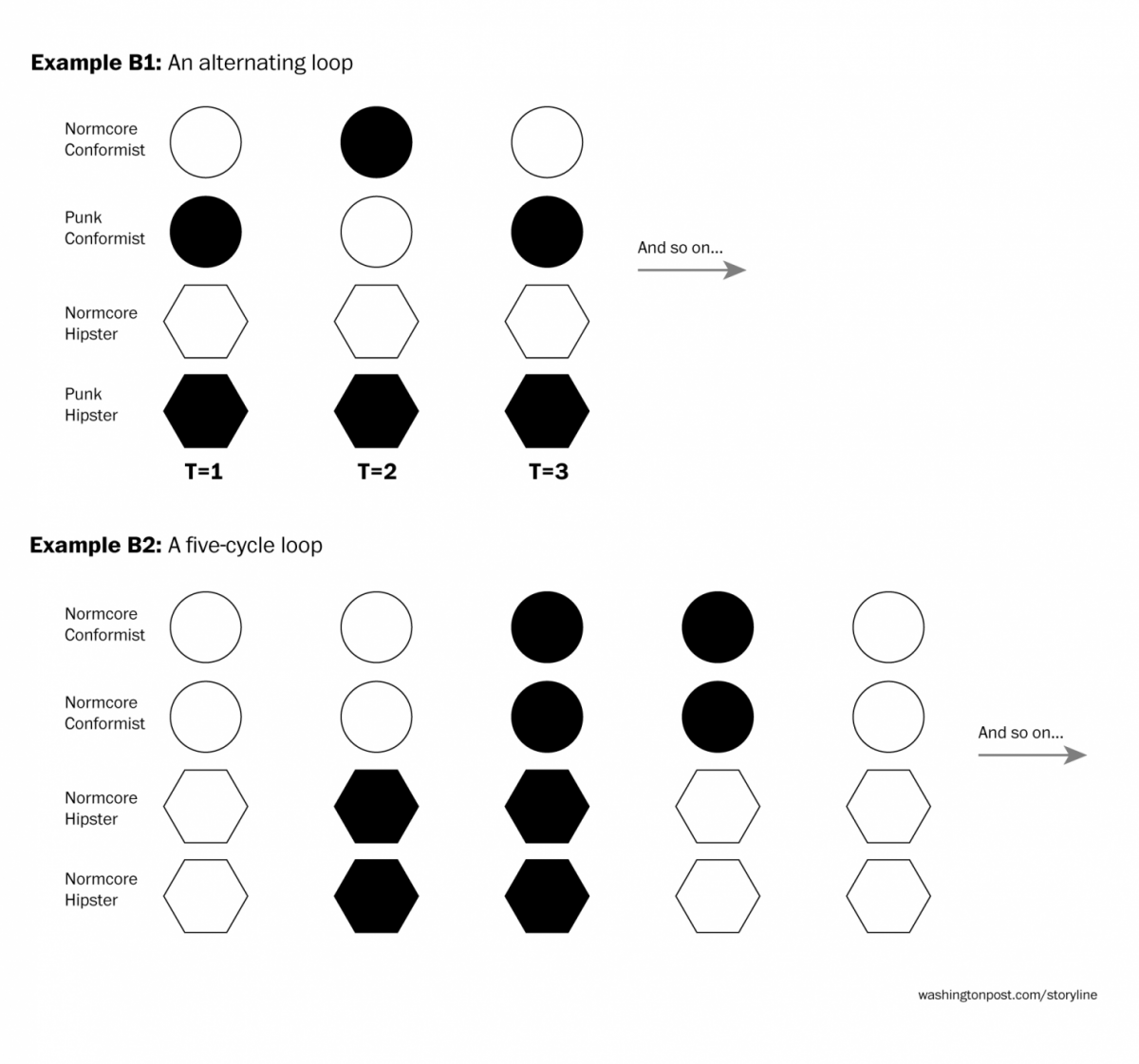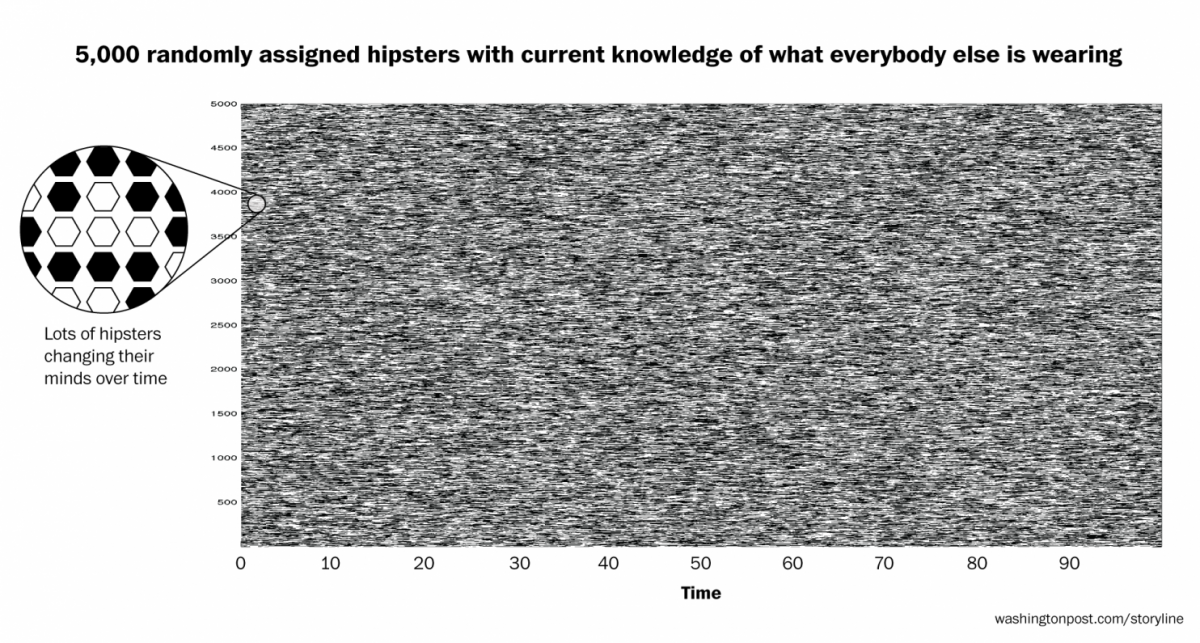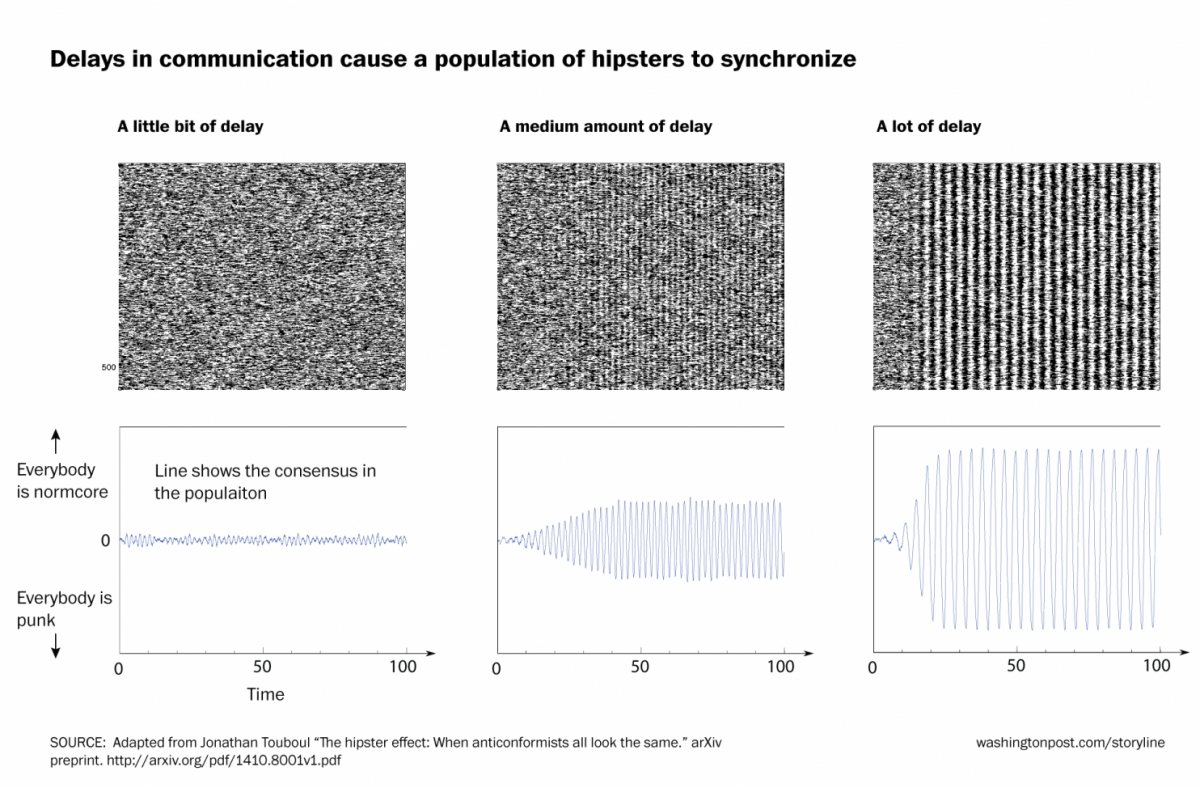What Brain Neurons Tell Us about the 'Hipster Effect' when Everything Ends Up Looking the Same

Jonathan Touboul is a mathematician and a neuroscientist. He holds a PhD in math from France’s prestigious École Polytechnique, where he won a prize for his thesis on how to simulate neurons in the brain. He publishes papers with titles like “Pulsatile localized dynamics in delayed neural-field equations in arbitrary dimension” and “The propagation of chaos in neural fields.”
Recently, though, Touboul has been thinking about hipsters. Specifically, why hipsters all seem to dress alike. In his line of work, there are neurons that also behave like hipsters. They fire when every neuron around them is quiet; or they fall silent when every neuron around them is chattering.
Because he is a mathematician, Touboul began to look for a way to explore this idea using equations. In other words, he constructed a mathematical model. His key insight is that people (and neurons) do not instantly perceive what is mainstream. There’s a delay. And in situations where the delay is large enough, the contrarians can inadvertently synchronize with each other.
“In wanting to oppose the trends, there actually emerges some sort of hipster loop,” Touboul said.
A day before Halloween, Touboul put a draft of his paper on the arXiv, calling it “The hipster effect: When anticonformists all look the same.”
The paper was catnip, of course, for the hipster blogosphere, which loves all objets highbrow/lowbrow, the more meta the better. But this is a whimsical analogy for a serious topic. Widespread synchronicity in the brain is considered harmful, Touboul noted. It’s a feature of epileptic seizures, which can occur when groups of neurons fire together in abnormal ways.
To help us better understand his mathematical argument, Touboul walked us through parts of his paper, which he is submitting to a physics journal.
Trying to unpack one of these models can be like describing a work of Cubism: The art is lost. To his credit, Touboul keeps the math in his paper light and graceful. A background in nonlinear dynamics certainly helps, but with a sprinkle of imagination, anyone can grasp the story that his equations tell.
Touboul begins by envisioning a world where people choose between just two styles: Call them punk or normcore. There are two kinds of people in this world: those who like to go with the flow, and those who do the opposite — hipsters, in other words. Over time, people perceive what the mainstream trend is, and either align themselves with it or oppose it.
Here are some examples with a population of three conformists and one hipster. How the world evolves over time depends on who starts off in the majority and who starts off in the minority. Take white to be normcore, and black to be punk (obviously).

In example A1, the two conformists start off with the same style; the nonconformist is different. This world is stable. The conformists are happy because they are the majority. The hipster is happy because she’s in the minority. People stick with their current style.
In example A2, it takes some shuffling around before the world settles down. Two of the conformists start off normcore; the other conformist is punk; the hipster is also punk. From the perspective of each normcore conformist, the consensus seems to be punk (they don’t count themselves). They both decide to be punk in the next turn.
Eventually, after a few more switches, the system settles into stability: three punk conformists, and one normcore hipster.
What if this world contained equal numbers of conformists and hipsters? No matter how the population starts out, it will end up in some kind of cycle, as the conformists try to catch up to the hipsters, and the hipsters try to differentiate themselves from the conformists.

Now the real fun begins. Let’s look at a world with just hipsters, and let’s make the population bigger. Touboul lent us some of his simulation code, so we can see what happens with 5,000 hipsters. We randomly assign each to be either punk or normcore. The result is a field of noise. The hipsters cannot reach a consensus; they fight vigorously to be in the minority, but collectively, they act like a dog trying to chase its tail. (Touboul’s model, by the way, includes bit of randomness at each turn — a dash of realism.)
[

Here comes the crucial twist. In all of the examples so far, we assumed that everyone had instant knowledge of what everyone else was wearing. People knew exactly what the mainstream trend was. But in reality, there are always delays. It takes time for a signal to propagate across a brain; likewise it takes time for hipsters to read Complex or Pitchfork or whatever in order to figure out how to be contrarian.
So Touboul included a delay into the model. People would base their decisions not on the current state of affairs, but on the state of affairs some number of turns prior.
What Touboul noticed is that if you increase the delay factor past a certain point, something amazing happens. Out of what appears to be random noise, a pattern emerges. All of the hipsters start to synchronize, and they start to oscillate in unison.
Here is an example of what happens when the delay gets longer and and longer:

As Touboul described it:
> Indeed, a random imbalance will be detected after some time and all anticonformist individuals will tend to disalign to this trend, regardless of the fact that an increasing proportion of them do and therefore yield a clear bias towards the opposite trend. This will be detected at later times, leading to a reciprocal switch, and these oscillations will periodically repeat. Despite their efforts, at all times, anticonformists fail being disaligned with the majority.
Translation: The hipsters are still recoiling from the mainstream, but each holds an outdated concept of what the mainstream is. Because they are slow to react, they end up all looking alike, and all changing fashions at the same time. (Irony of ironies!)
Here is where you might object that Touboul’s model oversimplifies something. In real life, there are a million ways to be nonconformist. You can be goth; you can be preppy; you can be grunge. Touboul’s model doesn’t quite explain the current hipster obsession with scraggly beards and undercuts. He admits as much. “The brain is more complex than the model I looked at, and of course hipsters are more complex,” he said.
But the beauty of Touboul’s model, which he sketches out in a meager four pages, lies in its succinctness. He doesn’t aim to explain everything. His goal is to express a single idea about how nonconformists might synchronize, and he does so in the most concise way possible. Touboul belongs to a breed of theoreticians who see themselves as storytellers working in numbers. They value tight pacing; a plot that’s boiled down to its essence.
Many economic theorists subscribe to the same view. Economic models often fall victim to the critique that they are insufficiently realistic. But to complain that a model does not reflect all facets of reality misses the point of model-making, which is to create tools for people to understand complex ideas. This is true whether the model is made out of wood, or out of equations.
“That’s the real role of mathematics,” Touboul said. “To abstract things. To see what is really important.”](http://www.corespirit.com/wp-content/uploads/2016/12/imrs-2.png)
By Jeff Guo/The Washington Post
Be the first to post a message!